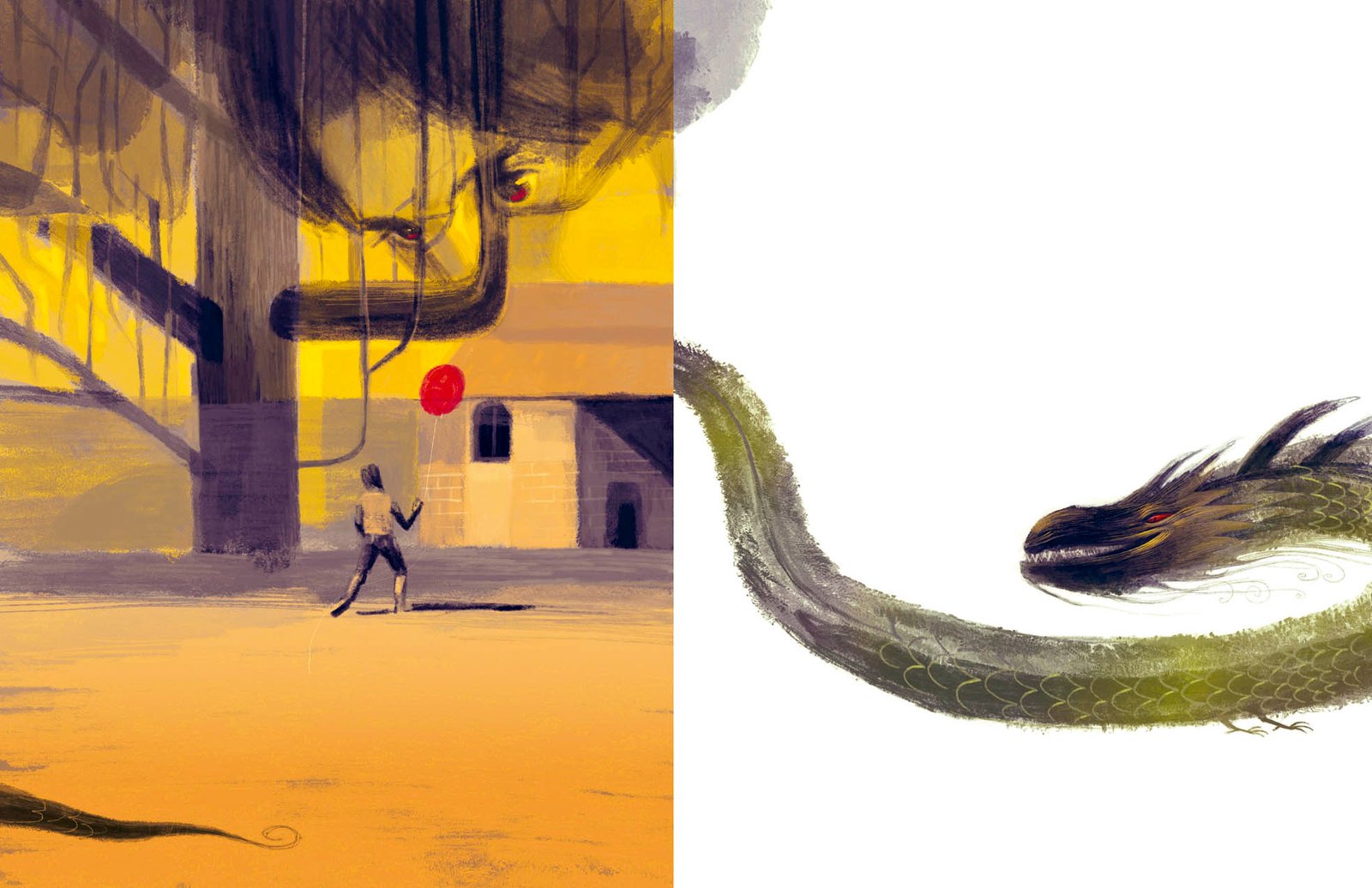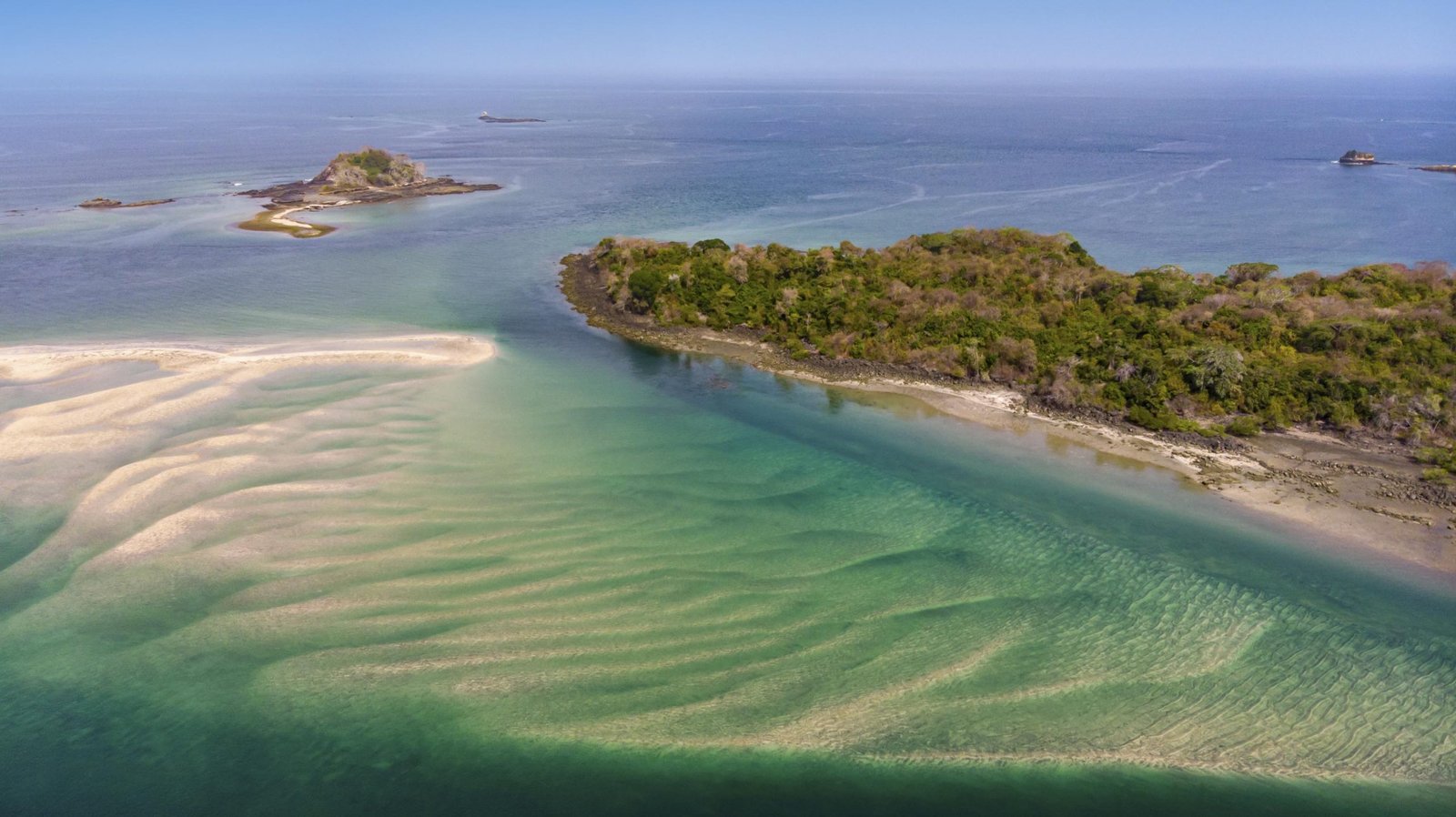
Experience the Pearl Islands
By Gaspar Victoria
Photos: Javier Pinzón
Leaving the Metropolis Behind
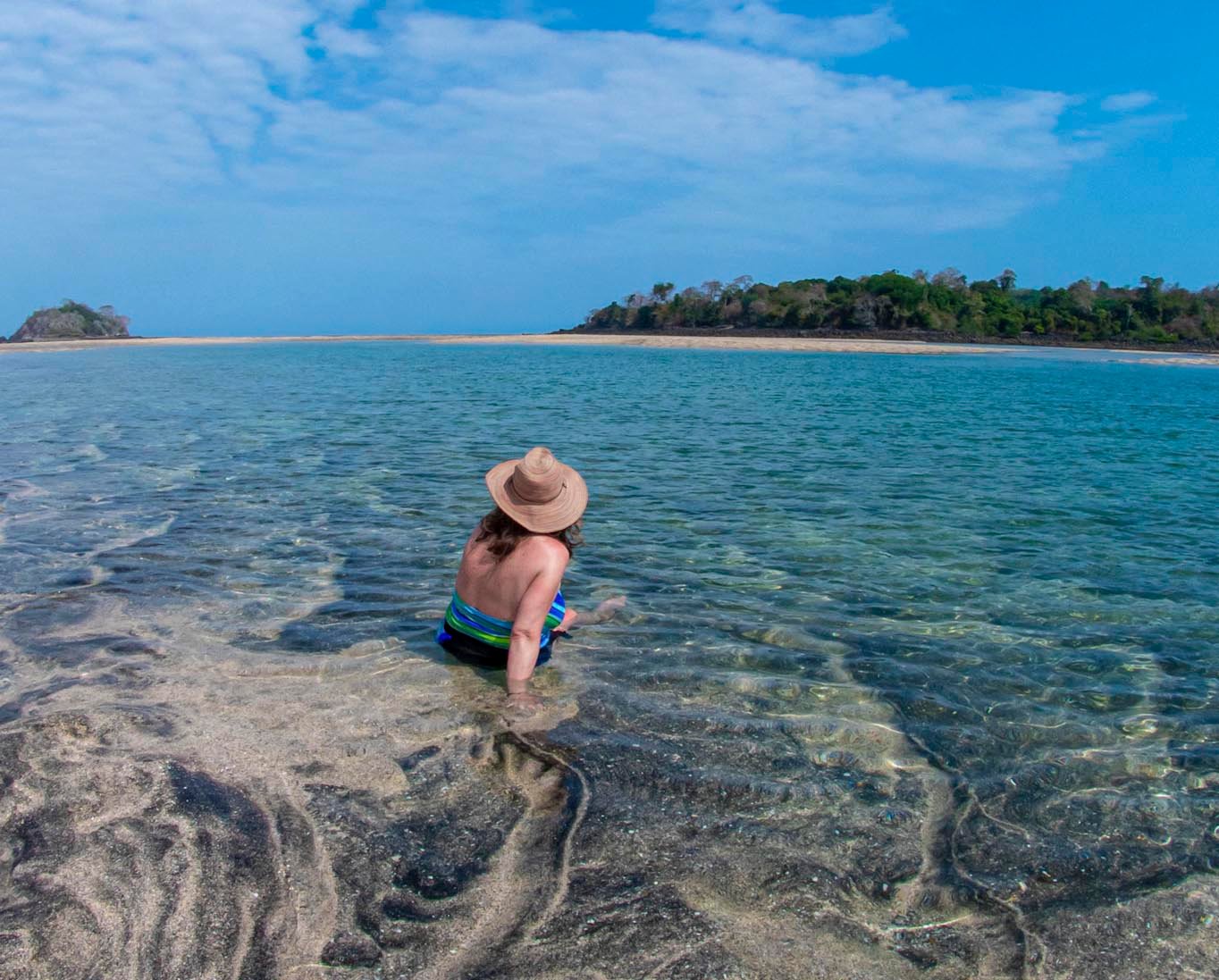
At 7 a.m., when the rest of the city is just beginning to wake up, the Flamenco marina on Panama’s southwest coast is already buzzing with activity. Our boat is ready and soon we’re slowly maneuvering between the docks. We’re traveling at a good speed by the time we pass Peñón de San José. Although it looks like an islet, at low tide you can see that it is really the final spit of dry land. The day is sunny but hazy, and Panama City’s crowded skyscrapers are quickly fading behind us. After traveling thirty-six miles southeast on a journey that takes just over an hour, we reached the first islands in the Las Perlas archipelago.
The Islands are Whatever You Want Them to Be
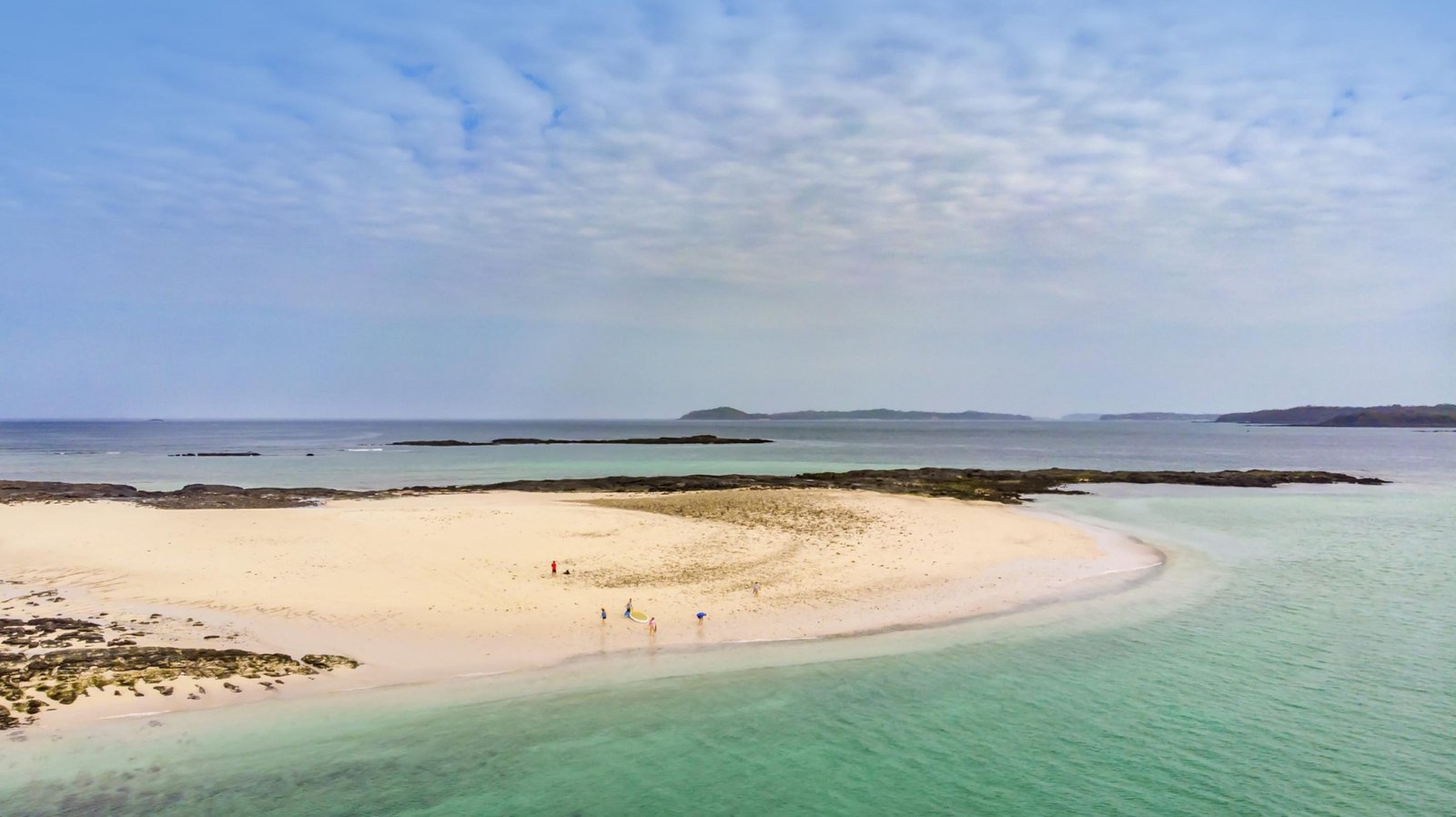
After a brief stop to pick up some friends in Contadora, the most developed and highly touristed island in the archipelago, we head for Bayoneta, a little further south. Bayoneta’s west face has a long, slightly arched beach that is open to the sea. We can’t see any other islands from the beach, and as we walk along collecting shells and listening to the whispering waves, we are convinced that there is nobody and nothing else in the world. Isla Caracoles seems to emerge from the sea with the sole mission of providing us with the perfect, once-in-a-lifetime romantic moment, while Boyarena makes it possible to walk on water, performing your own miracle.
A Thousand Eyes on You
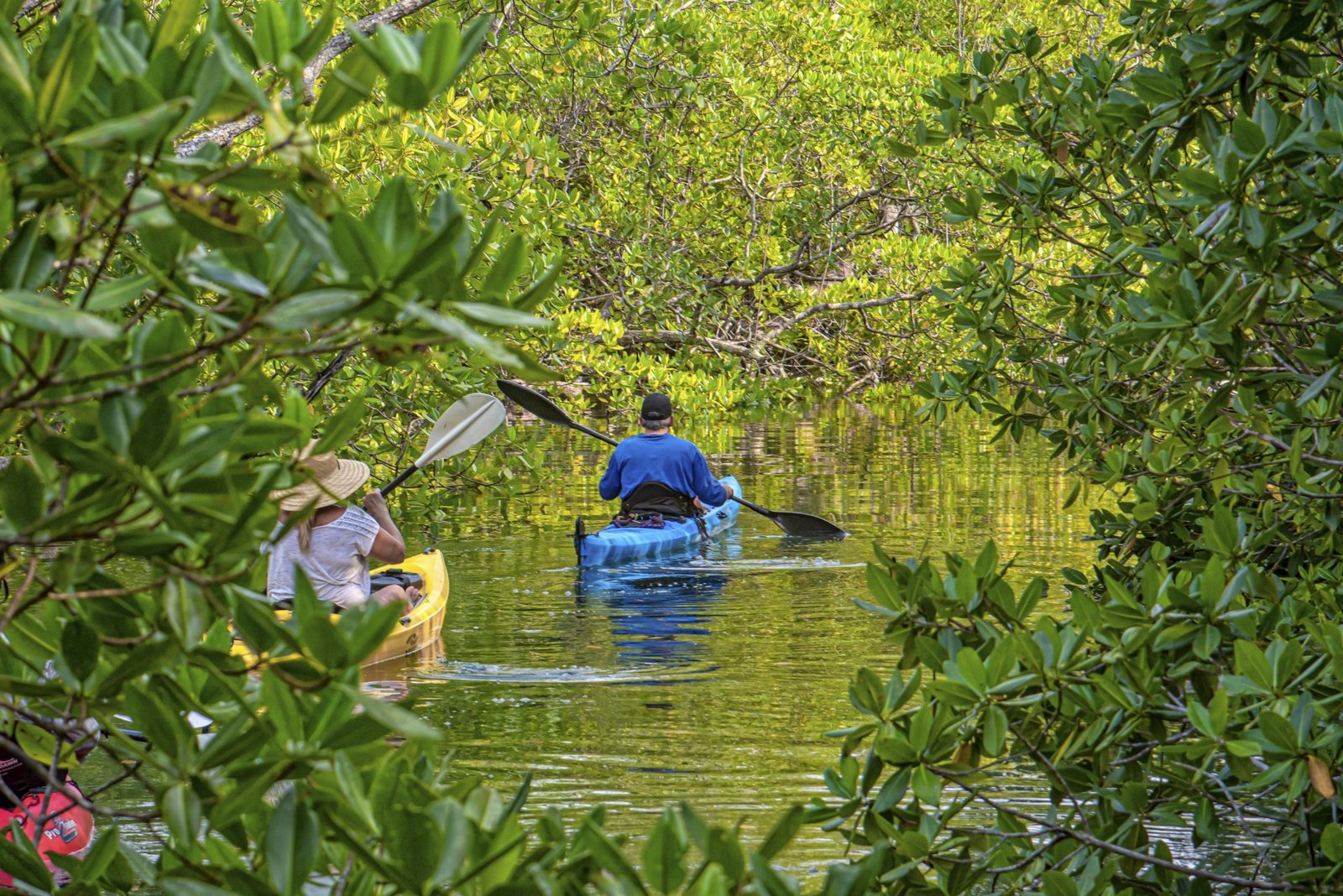
The waters of Las Perlas beg to be explored there is no better way to do it than by kayak. We toss our kayaks in the water and, in a few minutes, we are ready for adventure. On the northwest coast of Isla del Rey, near the Islote del Espíritu Santo, we navigate the mangroves until we see the entrance to a river and decide to paddle inward. Slowly, the mangroves narrow the channel and our support boat, also threatened by the current of the rising tide, is unable to continue. We go on. Below my kayak, the waters are suddenly churning and a flash of scales escapes into the depths. I feel a thousand eyes on me, looking down from the branches that surround us and up from beneath the waters we glide across. We’d like to continue, but the sun is going down and those eyes might move in closer. We take advantage of a bend to turn around and head back, rowing against the current. We’re tired, but we must continue. We locate our support boat and climb board, tying our kayaks to the back. Back in Contadora, we remember that the first whales will be arriving soon so we plan an outing to spot them.
Birds Greet the Dawn
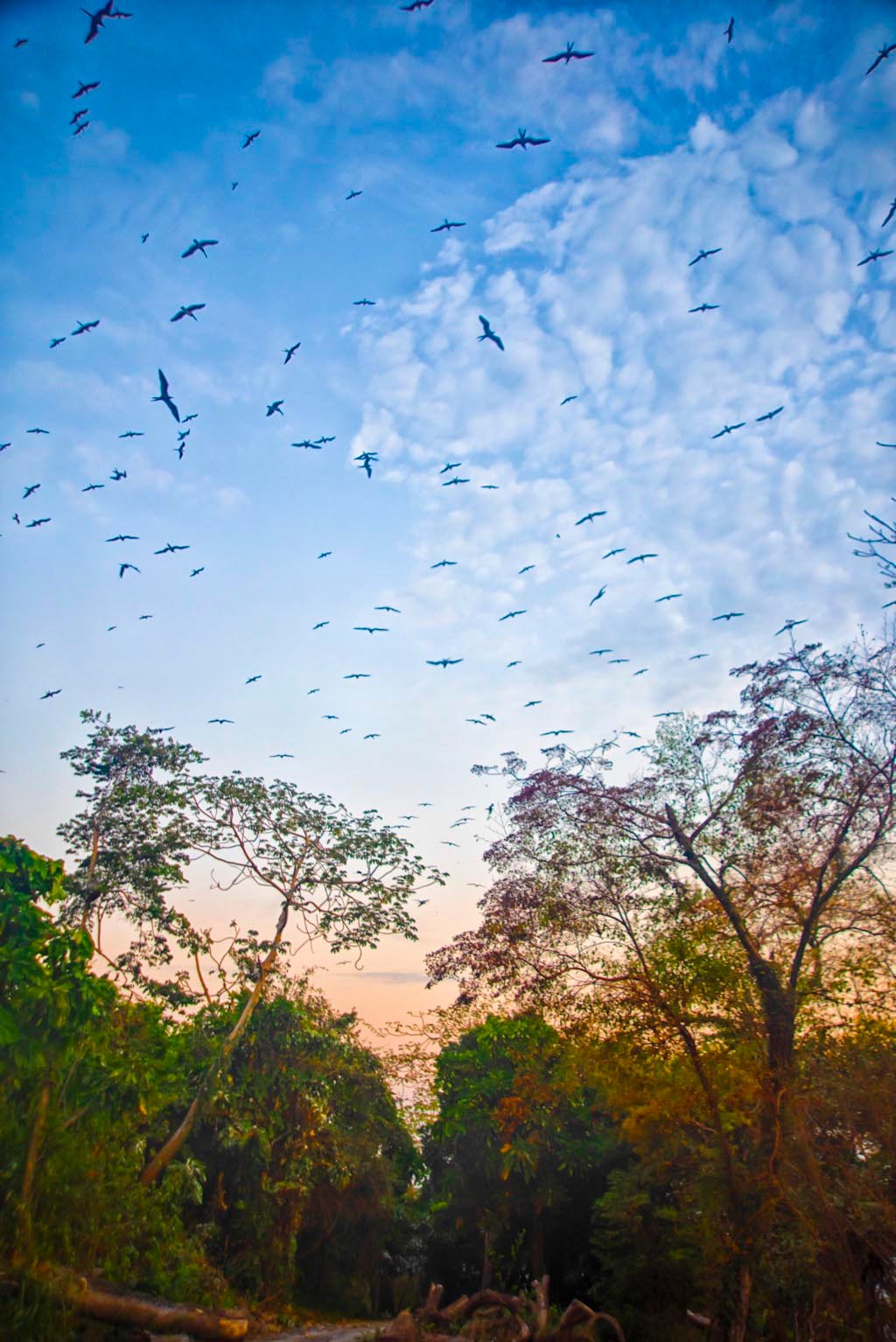
Pacheca Island, a wildlife refuge mainly for seabirds, is privately owned so when we’re granted permission to visit, we jump at the chance. Pacheca also has the best preserved traces of the archipelago’s volcanic origins. Most of its coastline is covered by steep cliffs crowned with trees that shelter a huge population of seabirds, including brown pelicans, blue-footed boobies, brown boobies, and various species of herons. We arrive shortly before dawn. The birds anticipate the arrival of the Sun King in the glow to the east and take flight, squawking as they set out in search of their daily food.
Learning to Sail in Saboga
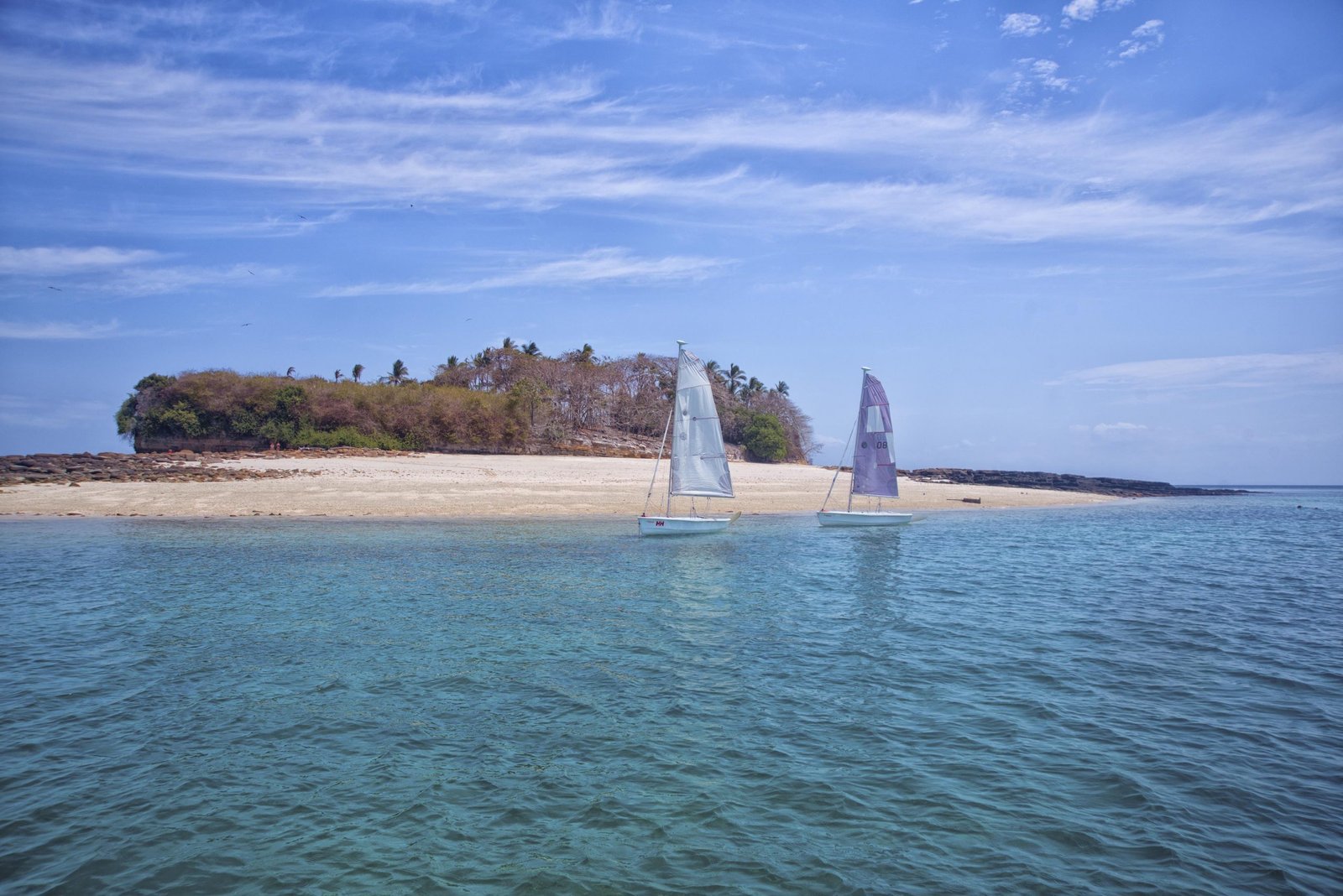
There is no better place to learn to sail than the shallow waters surrounding Las Perlas. For a little over eight years, the Panama Sailing Club (www.sailingclubpanama.com), based in Saboga, has offered sailing and windsurfing classes, as well as package tours that include complementary activities like yoga and paddle boarding. We board a sailboat in Saboga that is headed for Isla Bartolomé. We make rather mediocre sailors, but we enjoy the charade (we should take more lessons). Later, some of the group dives in the water around the island. Back in Saboga, we end the day’s adventure with cocktails in the shade of the palm groves, while others visit the very quiet, picturesque town and its 17th-century church.
Reciclaje en Las Perlas
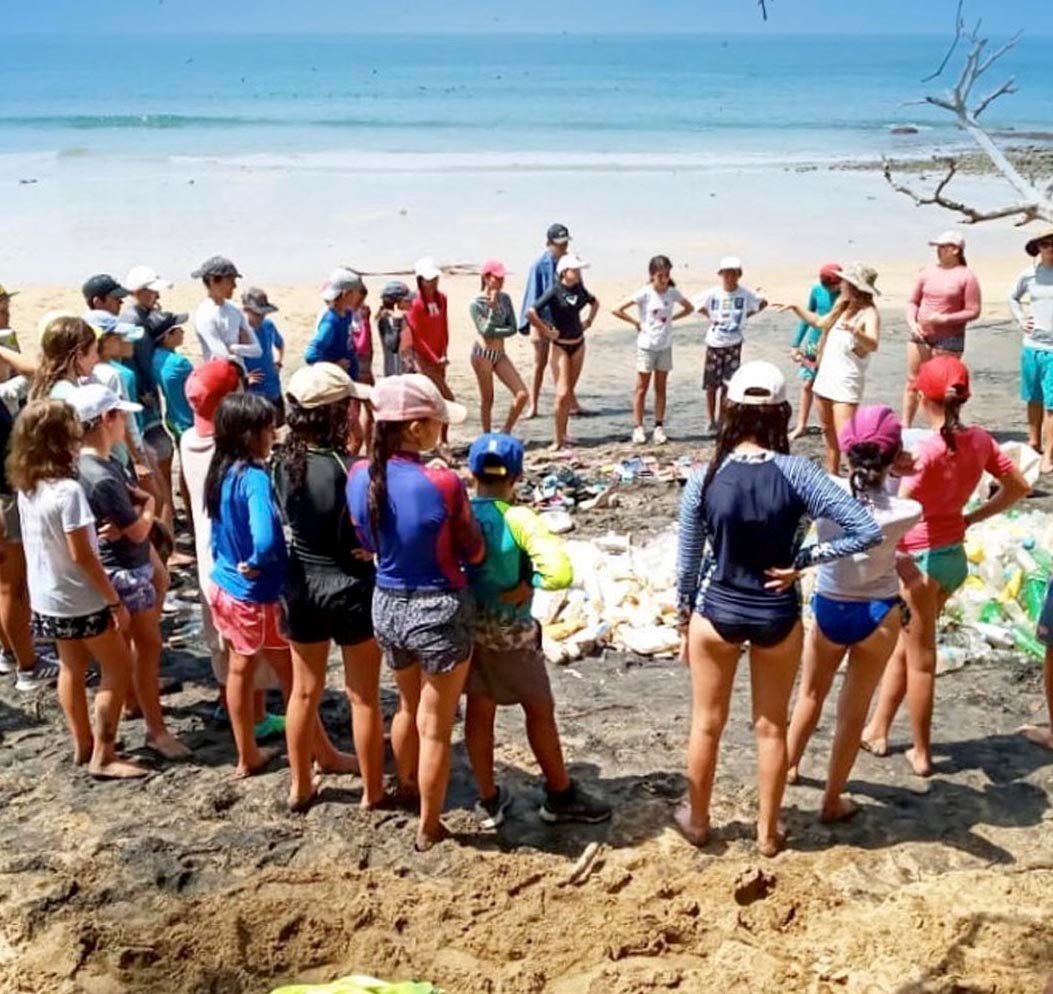
About a year ago, the Panama Sailing Club partnered with the Ocean Legacy NGO (www.oceanlegacy.ca) to develop a recycling project in Saboga. According to Panama Sailing Club’s Marta Plaza, the initiative sets up recycling points in the town’s shops that use a system in which consumers pay a deposit on products packed in plastic and get their money back when they return the empty containers. Plastic items are sorted into seven categories. Categories two and five are locally processed into construction blocks that are sold on the island, and the rest is sent to Panama City, where it is processed by the Gesvil (www.gesvilrecycling.com) recycling company. Profits are used to self-manage the project. Plaza hopes to replicate the project on the other islands and, possibly, throughout the country.
Final Sunset in Contadora
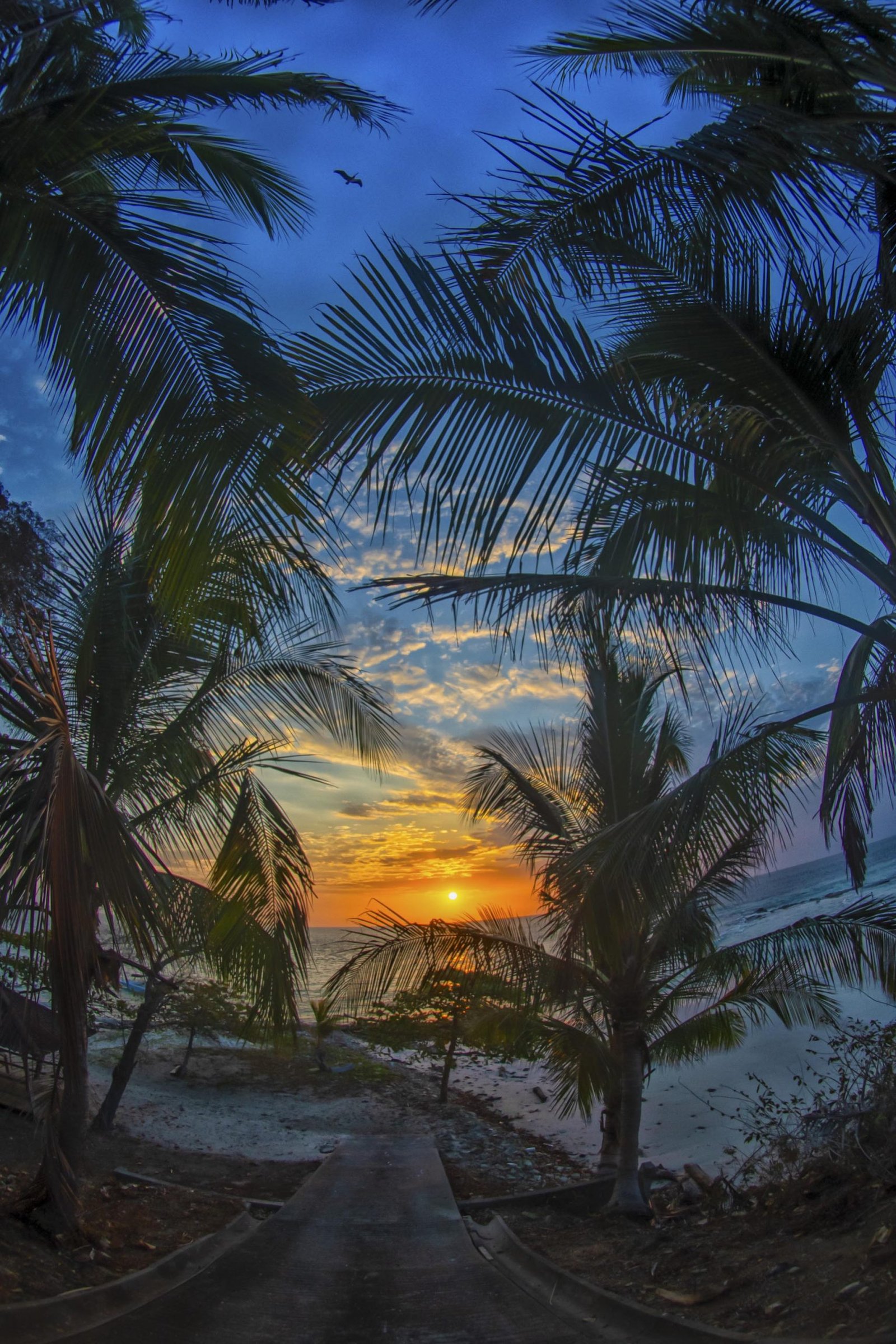
About a year ago, the Panama Sailing Club partnered with the Ocean Legacy NGO (www.oceanlegacy.ca) to develop a recycling project in Saboga. According to Panama Sailing Club’s Marta Plaza, the initiative sets up recycling points in the town’s shops that use a system in which consumers pay a deposit on products packed in plastic and get their money back when they return the empty containers. Plastic items are sorted into seven categories. Categories two and five are locally processed into construction blocks that are sold on the island, and the rest is sent to Panama City, where it is processed by the Gesvil (www.gesvilrecycling.com) recycling company. Profits are used to self-manage the project. Plaza hopes to replicate the project on the other islands and, possibly, throughout the country.
Pearl Island: A Milestone in the Archipelago’s Development
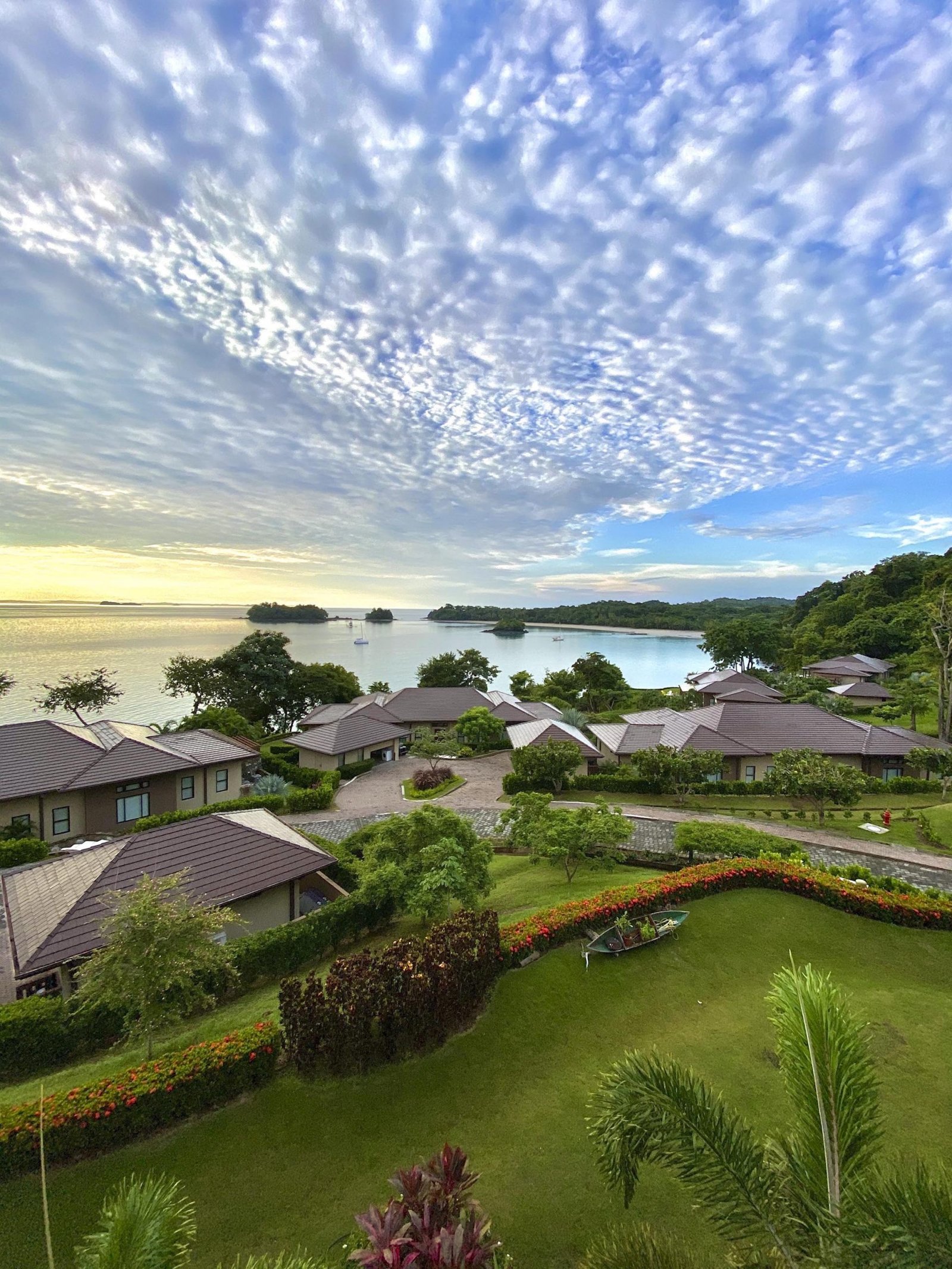
Locations like the Las Perlas archipelago have to walk the line between developing tourism potential and preserving biodiversity. The Pearl Island luxury project (www.pearlisland.com) sets an example of how to strike a balance between profit and the region’s environmental, economic, and social needs. Only 30% of the 3,600-acre property will be developed, leaving the rest of the ecosystem untouched to protect the 150 species of birds (including one of the hemisphere’s largest pelican populations), fifteen species of corals, 700 species of fish, and sixteen species of mammals that call it home. Pearl Island’s initial phase will consist of an airport, a beach club, a marina, restaurants, and other infrastructure to serve a limited number of villas and condominiums. A second phase will include a Ritz Carlton Reserve hotel and the brand’s residences on one of the island’s fourteen private beaches.
Escape to Paradise Island
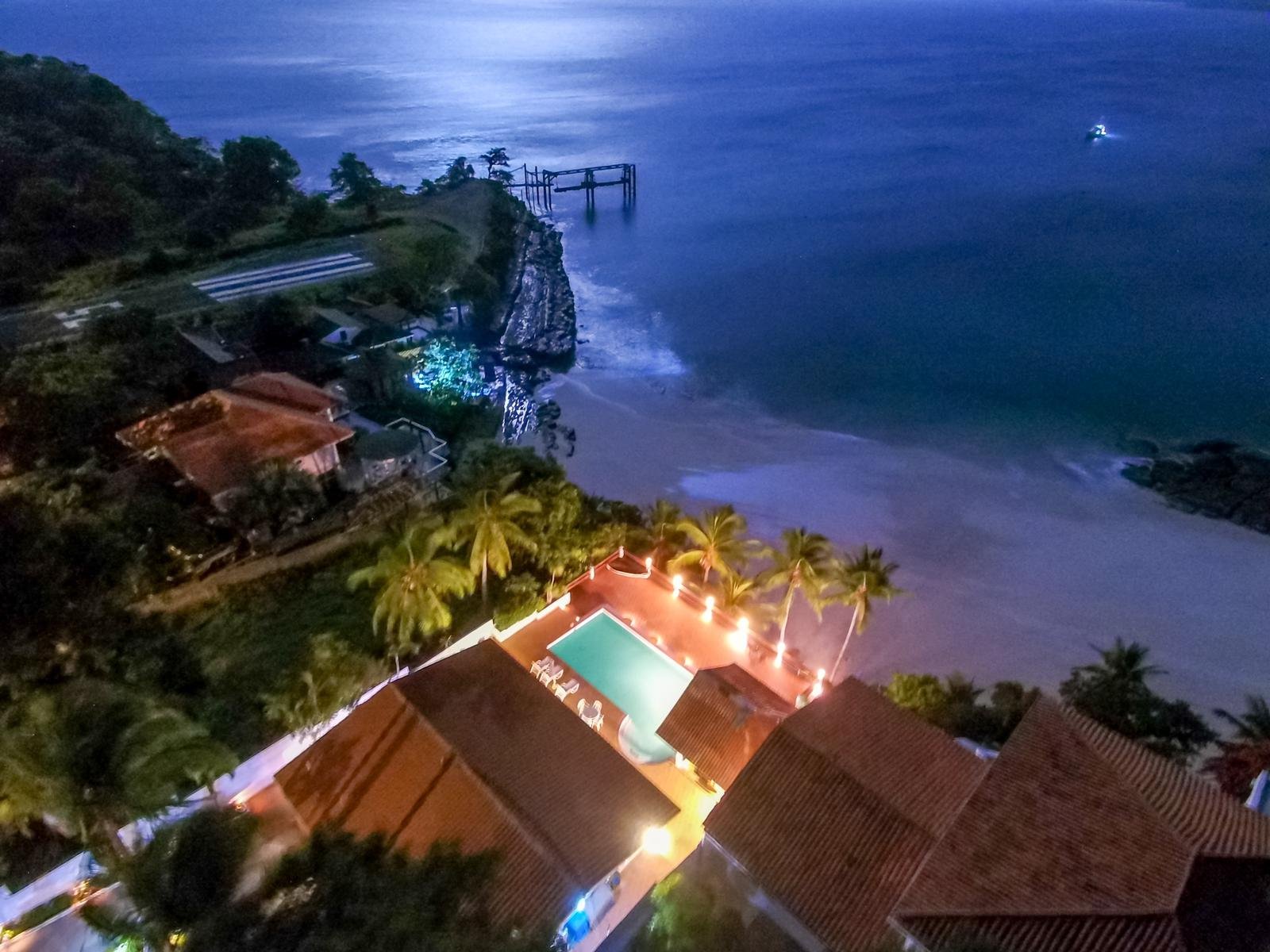
Just seventeen minutes from Panama City and two and a half hours from Miami.
Villa Condesa Del Mar is an oceanfront boutique hotel located in the Pearl Islands, Panama.
Cliffside suites, a swim up bar, private beach access, and VIP concierge services come together to offer an unforgettable experience.
At Villa Condesa Del Mar we have just one goal: to provide luxurious and exceptional accommodations.
Our focus is making sure our guests create memories that will last a lifetime, while providing world class hospitality.
@villacondesadelmar
Tel: +507 6950 5003



